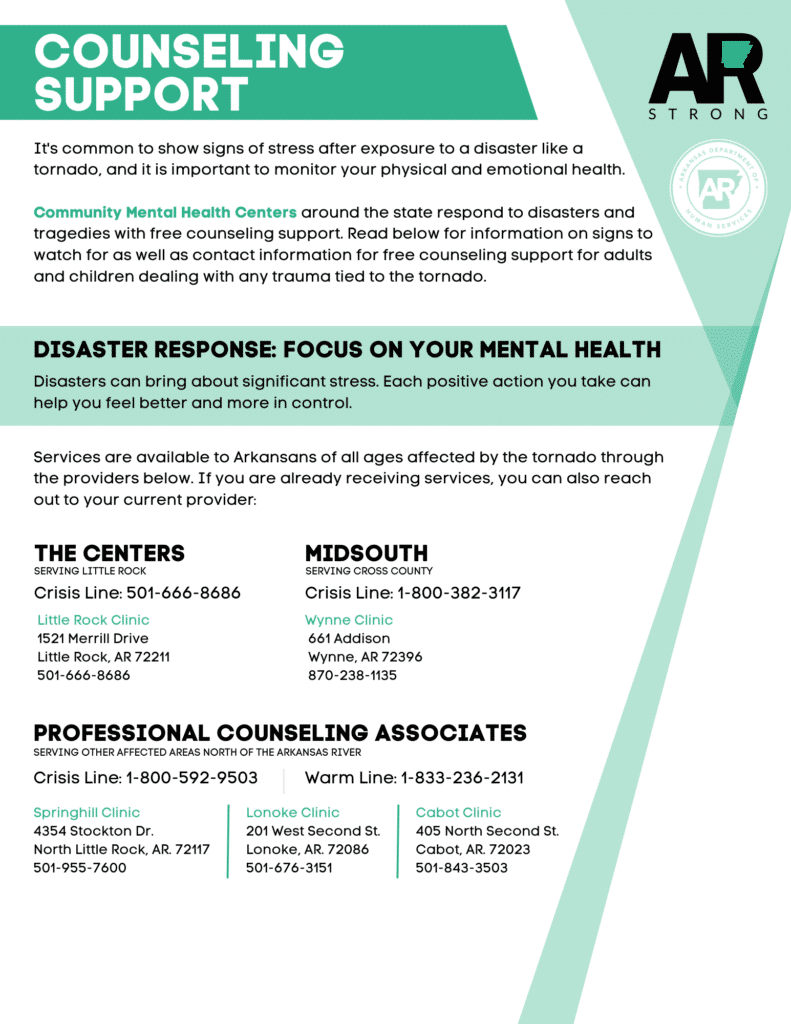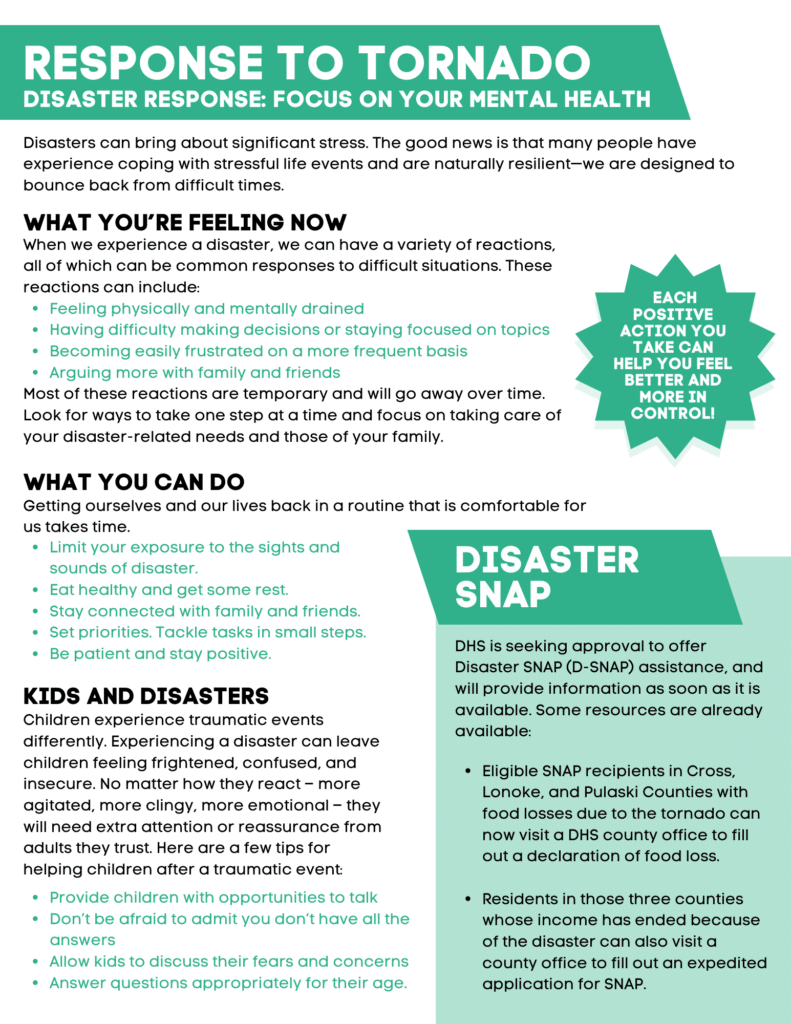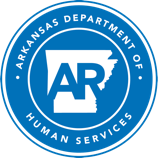

General Disaster Response and Recovery Information
- Tips for Survivors: Coping with Anger After a Disaster or Traumatic Event—Developed by SAMHSA, this tip sheet intends to aid survivors in coping with bouts of anger that may follow disasters or traumatic events. The tip sheet describes the physical changes that may indicate anger and provides guidance for coping and integrating positive habits into your life, as well as resources for additional support.
- Be Red Cross Ready: Taking Care of Your Emotional Health after a Disaster—This fact sheet from the American Red Cross lists common reactions to a disaster, identifies ways for survivors to cope effectively, and highlights signs of the need for additional mental health support.
The American Red Cross tip sheet:
- Coping After Disaster—The American Psychiatric Association provides online information about common reactions to disasters in adults and children and steps that survivors can take to manage disaster reactions and cope effectively. Also presented are links to resources on recognizing signs of trauma, coping and recovery after specific types of disasters, and mobile apps for stress management.
- Disaster Relief & Recovery Services: Recovering Financially—The American Red Cross offers online tips for recovering from the financial challenges that survivors of disasters may face. Tips focus on insurance claims, bills, and debt. Also provided are agencies to contact for lost vital documents, such as government-issued IDs and passports.
Tornado-specific Information
- Tornadoes and Severe Storms—At this web page, the SAMHSA Disaster Distress Helpline describes tornadoes and the effects that can have, lists populations at heightened risk of post-tornado distress, and provides links to related resources.
- Natural Disasters and Severe Weather: Tornadoes—At this web page, the Centers for Disease Control and Prevention (CDC) provides basic information about tornadoes and steps to take for health and safety before, during, and after a tornado. CDC also provides links to information about reentering and cleaning your home after a tornado, as well as hazards common after all disasters. This page is available in Spanish.
- Tornado: American Red Cross—With this app, American Red Cross notifies users with weather alerts, as well as National Oceanic and Atmospheric Administration (NOAA)-administered tornado watches and warnings. Users can select their language preference, English or Spanish, in the app. This app is available to download on the App Store and Google Play, or via text (“GETNADO” to 90999).
Resources for Faith-based Communities and Spiritual Leaders
- Faith Communities and Disaster Mental Health—This NDIN tip sheet provides information for religious leaders about common stress reactions people may have after a disaster and suggests ways faith leaders and others can cope effectively with disaster stress reactions, as well as helping others with coping. The sheet also provides information on referring people for mental health services. This tip sheet is available in Spanish.
- Tips & Lessons—Disaster Response: The Sunday After a Disaster—Developed after Hurricane Sandy in 2012, this tip sheet from Episcopal Relief & Development offers advice on how to provide community and congregational support after a disaster. Tips for working with children are also provided.
- Vulnerable Populations & Disaster—This NDIN tip sheet discusses how religious leaders can help meet the needs of vulnerable populations, including individuals with physical and cognitive differences and disabilities, during disaster preparedness and response. The tip sheet identifies several vulnerable populations and suggests practices to offer support to individuals within these populations during preparedness and response. This tip sheet is available in Spanish.
Resources for Children, Youth, Families, and Schools
- Children and Disasters—Part of the Disaster Survivors portal at the SAMHSA Disaster Technical Assistance Center website, this web page describes how children and teenagers may experience disasters differently from adults, offers tips for disaster planning for families, identifies common reactions to disasters in children and teenagers, and provides suggestions for adults for helping children and teenagers cope after disaster. Links to related resources are also provided.
- Coping After a Disaster—Developed by CDC and the American Academy of Pediatrics, this activity book can be used by parents and other caregivers and teachers to help children express their feelings about disasters. Children can color in the pictures in the book and complete puzzles and games, all while learning about disaster types, common reactions to disasters, and ways to cope with difficult reactions. The activity book is available in Spanish.
- Recovery From Large-Scale Crises: Guidelines for Crisis Teams and Administrators—In this tip sheet, the National Association of School Psychologists (NASP) describes what to expect in schools after disasters and other crises and how school crisis teams and administrators can support the school community in coping and recovery. NASP identifies steps administrators and crisis teams can take at different points after the crisis, from immediately after the crisis to more than a year later.
- Tornado Resources—At this part of its website, the National Child Traumatic Stress Network (NCTSN) describes tornadoes and the effects they commonly have on children, teenagers, and families. The “After” part of this website section includes information about how professionals can guide parents in helping their children to cope, engaging in self-care, and seeking additional assistance as needed.
- Trinka and Sam and the Swirling Twirling Wind—This children’s book from the NCTSN tells the story of Trinka and Sam, two young mice who are friends and neighbors who survive a tornado. The story covers experiences and reactions children may have during and after a tornado. At the end is a guide for parents and caregivers to help them use the book as a tool for supporting their children in coping after a tornado. The booklet is also available in Spanish.
Resources Focused on Older Adults
- Helping Older Adults After Disasters: A Guide to Providing Support—Designed for anyone supporting older adults after a disaster, this SAMHSA guide highlights reactions to disasters that are common among survivors of all ages, as well as unique challenges older adults may face after disasters and how response workers can help. The guide also identifies resources available to help in connecting older adults with services and supports.
- Eldercare Locator—This service of the Administration on Aging, part of the U.S. Administration for Community Living, features an online database users can search by ZIP code and city and state to find local services for older adults, which may be particularly useful following a disaster. The service can also be reached by toll-free phone at 1–800–677–1116. The Eldercare Locator website includes links to consumer publications and websites of organizations that serve older adults.
- Helping Families Deal with the Stress of Relocation After a Disaster—In this handout, the Centers for Disease Control and Prevention provides a wealth of information about stress, why relocation after a disaster may be stressful, common signs of stress, and ways that parents and other caregivers can support children and adolescents in coping. Tips are also provided for helping older adults with coping, as are links to related resources.
Resources Focused on People with Disabilities
- People With Disabilities and Other Functional and Access Needs—This part of the SAMHSA Disaster Behavioral Health Information Series resource collection covers various aspects of preparedness, response, and recovery for people with disabilities and other functional and access needs. Items in the collection include articles, guides, and organizations.
- Hidden Disabilities: Communication Tips for First Responders—This 8-minute training video recommends ways for first responders to communicate effectively with people with autism spectrum disorder, fetal alcohol spectrum disorder, posttraumatic stress disorder, and traumatic brain injury. Although the video addresses communicating in non-disaster situations, it presents principles of effective communication that may be helpful in disasters. The video was developed by the Anchorage Police Department, Governor’s Council on Disabilities and Special Education, and the University of Alaska Anchorage, as well as other agencies and organizations in Alaska.
- Tips for First Responders, 5th Edition—This guide from the Center for Development and Disability at the University of New Mexico offers tips responders can use during emergencies and routine encounters to support and communicate with people with disabilities and other access and functional needs. Sections of the guide focus on older adults and on people with service animals, mobility impairments, autism, multiple chemical sensitivities, cognitive disabilities, and hearing or visual impairments. The guide is available in Spanish.
- Tips for Providing Services for Individuals Living with Functional and Access Needs—In this brochure, the Alabama Disability and Health Program provides tips for people serving disaster survivors with disabilities and other access and functional needs. Sections focus on assisting people with physical disabilities, people who are deaf or hard of hearing, people who have speech disabilities, people who are blind or who have low vision, and other populations.
Resources for Disaster Responders
- First Responders and Disaster Responders Resource Portal—This part of the SAMHSA Disaster Technical Assistance Center website notes the stressors that may be involved in work as a responder, identifies signs of stress, and offers coping tips. The page features links to tip sheets, online trainings, and other resources related to responder mental health and freedom from substance use issues and conditions.
- A Guide to Managing Stress for Disaster Responders and First Responders—This SAMHSA guide is designed for first responders, public health workers, construction workers, transportation workers, utility workers, crisis counselors, and volunteers who respond to disasters and other crises. The guide provides information on how people experience stress; signs of extreme stress; and ways for organizations and individuals to manage and mitigate stress before, during, and after disaster response.
- Emergency Responders: Tips for Taking Care of Yourself—This online article from the Centers for Disease Control and Prevention (CDC) emphasizes the importance of responder self-care and presents steps responders can take before, during, and after deployment to manage stress and avoid burnout and secondary traumatic stress. Suggestions are provided for working with other responders on stress management and maintaining habits to support health and optimal functioning.
- Psychological First Aid Field Operations Guide, 2nd Edition—Developed by the National Center for Posttraumatic Stress Disorder (PTSD) and the National Child Traumatic Stress Network (NCTSN), Psychological First Aid is an evidence-informed approach that disaster response workers can use to assist people in the immediate aftermath of disaster. The NCTSN also provides a Spanish guide.
Additional Resources for Acute Needs
- SAMHSA Disaster Distress Helpline—The SAMHSA Disaster Distress Helpline (DDH) provides free, confidential crisis counseling and support to people in distress due to natural and human-caused disasters. The DDH is available 24/7, on all days of the year, via talk or text to 1–800–985–5990. The line also offers support in Spanish (people who call or text should press 2 for this option) and several additional languages other than English. People who are deaf or hard of hearing or who have other speech or hearing disabilities can use the texting option or, if they would like support in American Sign Language (ASL), they can call the DDH’s toll-free number via videophone-enabled device or click the “ASL Now” link at the DDH website. This website is available in Spanish.
- 988 Suicide and Crisis Lifeline—The 988 Suicide and Crisis Lifeline is a source of support available 24/7 to people in crisis, including people experiencing challenging reactions to disasters. Call 988 for support in English or Spanish. The website is available in Spanish.
A disaster event such as this is unexpected and often brings out strong emotions. People can call or text the SAMHSA Disaster Distress Helpline’s toll-free number (1–800–985–5990) and receive immediate counseling. This free, confidential, multilingual crisis support service is available to anyone experiencing distress as a result of a disaster. People who call and text are connected to trained, caring professionals from crisis counseling centers in the network. Helpline staff provide confidential counseling, referrals, and other needed support services.



